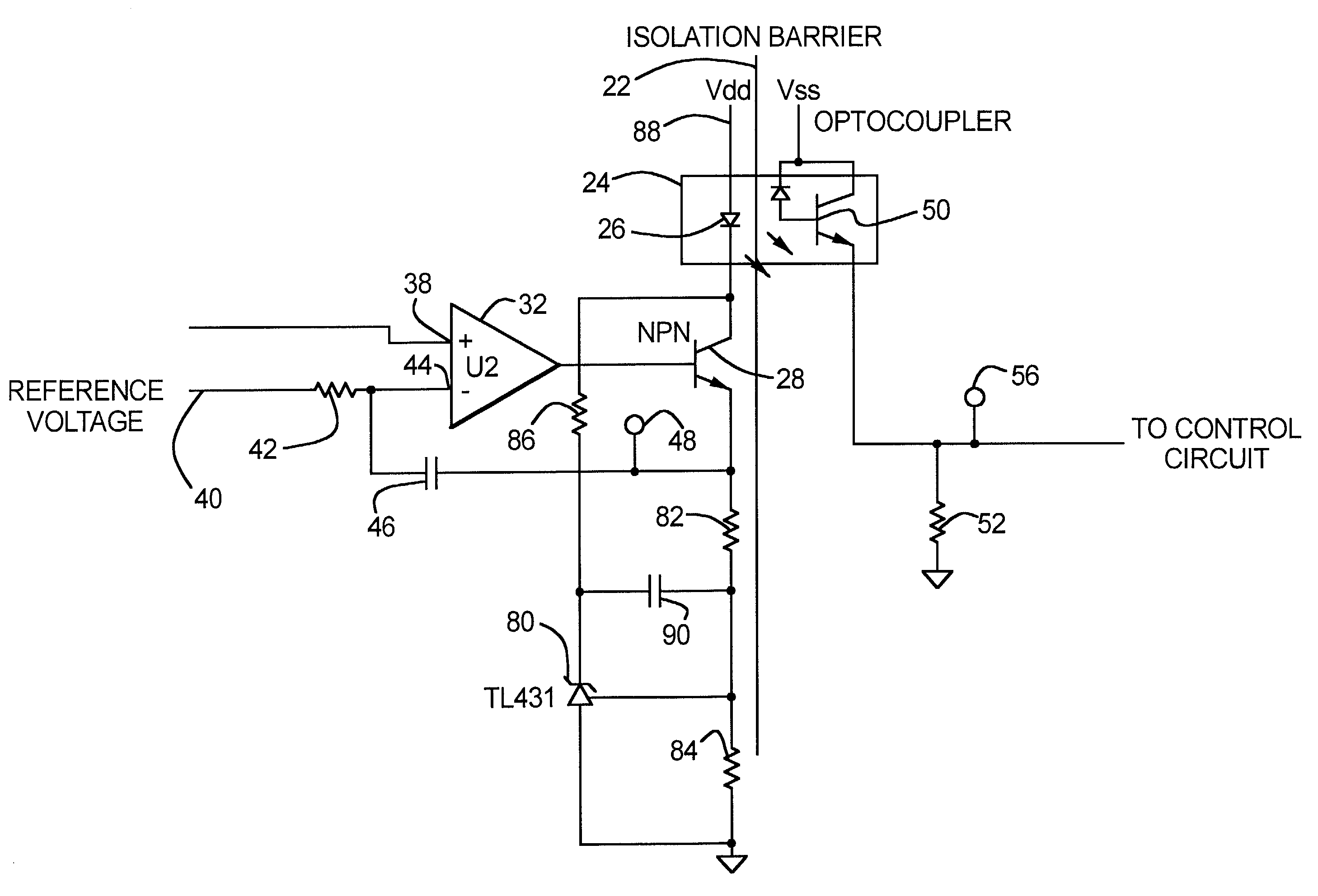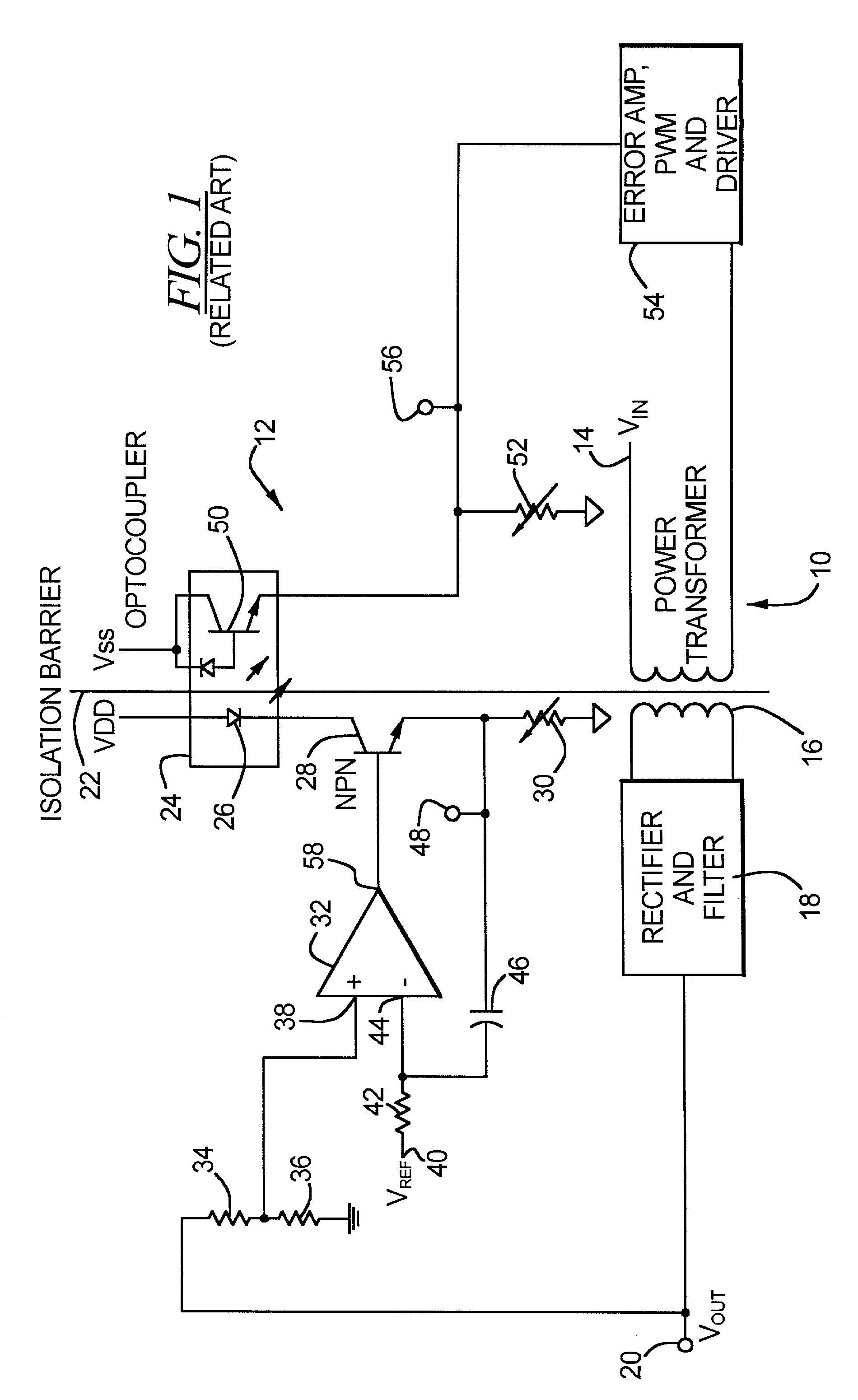Gain compensation for optocoupler feedback circuit
a gain compensation and feedback technology, applied in the direction of electric variable regulation, instruments, semiconductor lasers, etc., can solve the problems of increasing or decreasing the current transfer ratio of the optocoupler, introducing undesirable variations in performance and capability, and affecting the device li
- Summary
- Abstract
- Description
- Claims
- Application Information
AI Technical Summary
Benefits of technology
Problems solved by technology
Method used
Image
Examples
Embodiment Construction
[0030]In FIG. 2, only the feedback circuit is shown. The feedback circuit may be used with a power supply as shown in FIG. 1, or may be used with any other circuit for which a fixed gain feedback would benefit. The elements which are common to FIG. 1 are shown with the same reference characters. The voltage at the test point 56 to the control circuit is recognized as a fairly constant DC value. Using this assumption, a compensation is made for the variations in the current transfer ratio of the optocoupler 24. A circuit 60 is added to replace the trim resistor 30 with a resistor 62 and a resistor 64 to form a voltage divider that senses the current through the light emitting diode 26 of the optocoupler 24. The voltage at the midpoint (the physical midpoint, but not necessarily electrical midpoint) of the voltage divider 62 and 64 is connected to a non-inverting input 66 of a operational amplifier 68, the inverting input 70 of which is connected to a reference voltage 72. A resistor ...
PUM
 Login to View More
Login to View More Abstract
Description
Claims
Application Information
 Login to View More
Login to View More - R&D
- Intellectual Property
- Life Sciences
- Materials
- Tech Scout
- Unparalleled Data Quality
- Higher Quality Content
- 60% Fewer Hallucinations
Browse by: Latest US Patents, China's latest patents, Technical Efficacy Thesaurus, Application Domain, Technology Topic, Popular Technical Reports.
© 2025 PatSnap. All rights reserved.Legal|Privacy policy|Modern Slavery Act Transparency Statement|Sitemap|About US| Contact US: help@patsnap.com



